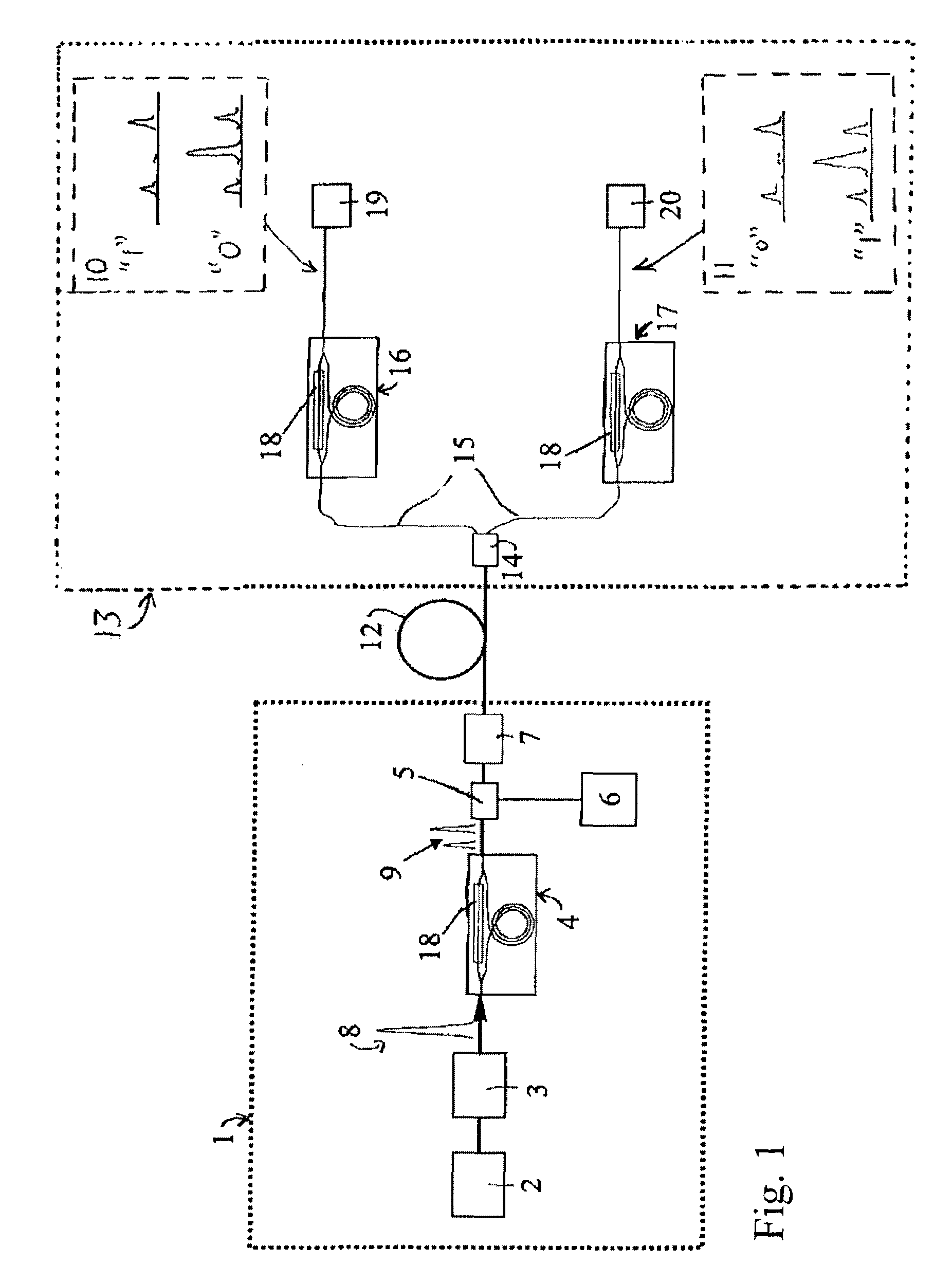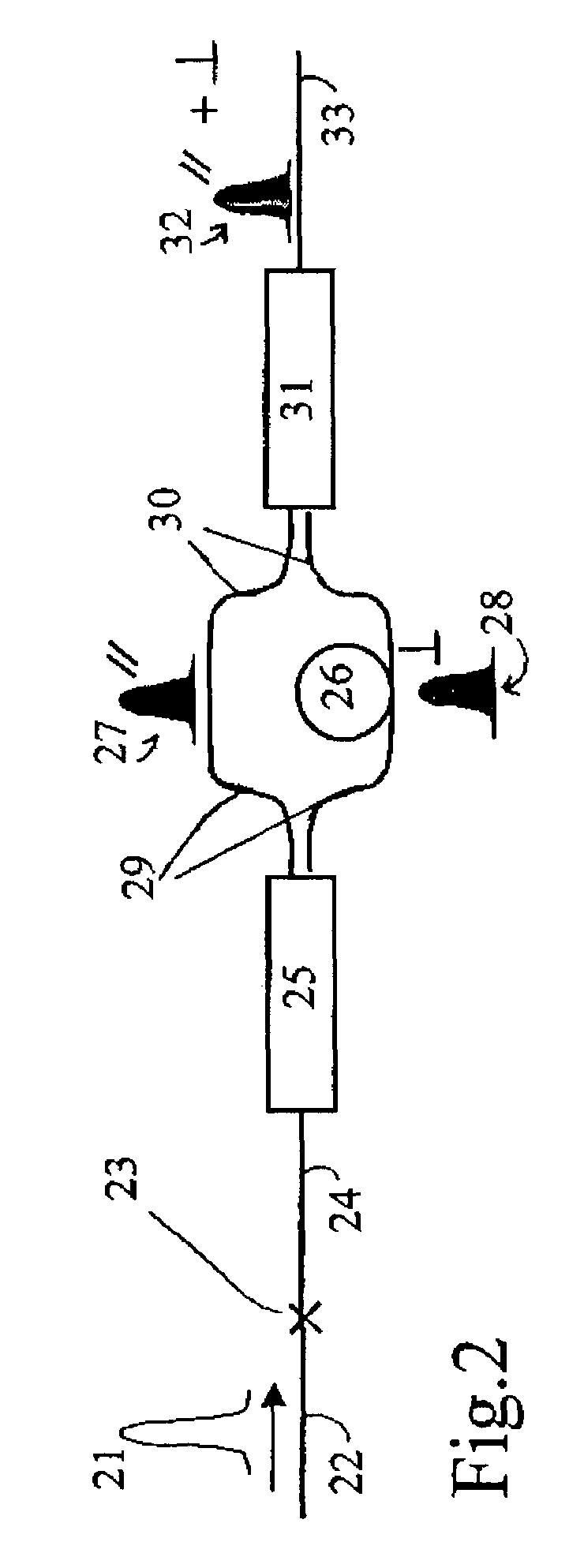Method and apparatus for use in encrypted communication
- Summary
- Abstract
- Description
- Claims
- Application Information
AI Technical Summary
Benefits of technology
Problems solved by technology
Method used
Image
Examples
Embodiment Construction
[0029]FIG. 1 depicts the characteristic optical part of an apparatus for establishing a quantum key in accordance with the current invention. The transmitter 1 includes a pulsed semiconductor diode laser 2, an attenuator 3, a waveguide delay stage 4, a phase modulator 5, a random number generator 6 and a depolariser 7. The delay stage shown is based on the waveguide integrated Mach-Zehnder (MZ) interferometers described by Bonfrate et al in the paper referenced above, from which further details may be obtained. The relative (probabilistic) amplitudes and temporal positions of the components of the dim pulses generated by the transmitter are shown at various points in the system 8-11. The random bits that ultimately generate the cryptographic key are encoded in the phase difference of the dim pulse pairs 9 according to the Bennett 1992 protocol referred to above. That is to say the random number generator 6 switches the phase modulator 5 between two phase settings, namely 0° (bit 0) ...
PUM
 Login to View More
Login to View More Abstract
Description
Claims
Application Information
 Login to View More
Login to View More - R&D
- Intellectual Property
- Life Sciences
- Materials
- Tech Scout
- Unparalleled Data Quality
- Higher Quality Content
- 60% Fewer Hallucinations
Browse by: Latest US Patents, China's latest patents, Technical Efficacy Thesaurus, Application Domain, Technology Topic, Popular Technical Reports.
© 2025 PatSnap. All rights reserved.Legal|Privacy policy|Modern Slavery Act Transparency Statement|Sitemap|About US| Contact US: help@patsnap.com



